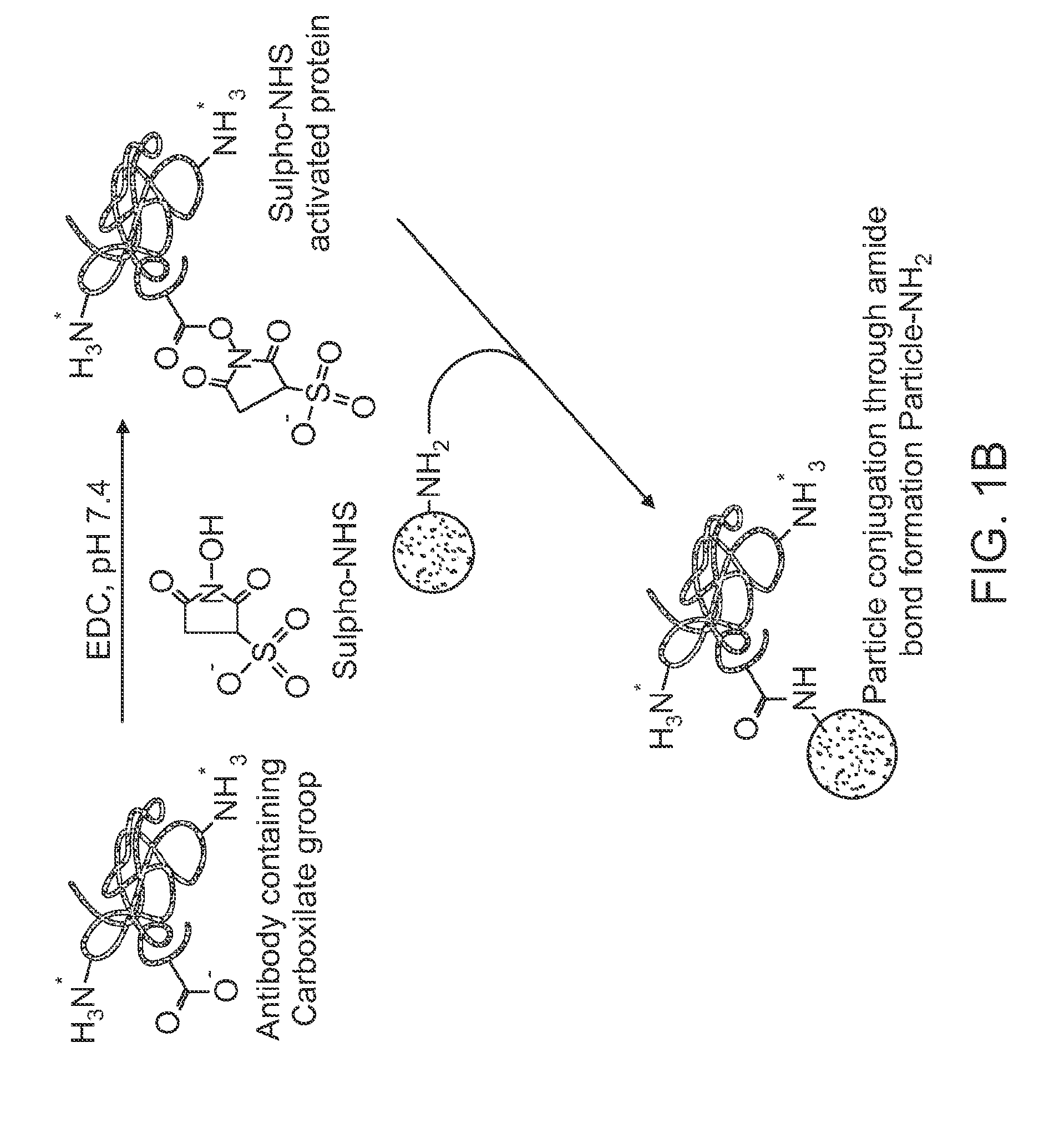Therapeutic stable nanoparticles
a nanoparticle and stable technology, applied in the field of therapeutic nanoparticles, can solve the problems of low bioavailability, difficult scaling up of technology, and difficulty in preparing dosage forms, and achieve the effect of poor water soluble and high concentration
- Summary
- Abstract
- Description
- Claims
- Application Information
AI Technical Summary
Benefits of technology
Problems solved by technology
Method used
Image
Examples
example 1
Preparation of Stable Nano-Colloids of Poorly Soluble Drugs
[0130]Stable colloids of poorly soluble drugs were prepared in order to increase their solubilization and bioavailability. To do this high power sonication poor soluble drug aqueous dispersions is used with simultaneous LbL-nanocoating. Such coating reverses and enhances a particle surface charge which prevents re-aggregation of the drug and allows getting smaller and smaller drug colloids (proportionally to the sonication time).
[0131]A simultaneous application of powerful sonication and adsorption of opposite charged polyelectrolytes caused a systematic decrease of insoluble drug particle size to nano-scale in the following process (depicted schematically in FIG. 1A). Sonication energy initially cleaves and cracks bulk drug, and polyelectrolytes immediately fix this sub-dividing, preventing re-aggregation of the pieces. Longer sonication times allowed smaller and smaller particles (to about 100 nm diameter) which are stable...
example 2
Preparation of Stable Nanoparticles of meso-Tetraphenylporphyrin and Camptothecin
[0164]LbL nanoparticles of meso-tetraphenylporphyrin and camptothecin were prepared as described in Example 1. As depicted in FIG. 15, meso-tetraphenylporphyrin nanoparticles were produced using a coating of FITC-labeled PAH, which reversed the surface charge from negative to positive. SEM demonstrated particle sizes from about 83 nm to about 194 nm (FIG. 15B).
[0165]LbL nanoparticles of camptothecin were also prepared. Optimization of the first polycation coating was performed. Three polycations (PAH, PEI and PDDA) and one polyanion (PSS) were used. In presence of PSS, which has the same charge as the drug core, no particle size decrease was observed (FIG. 16). All the polycations were able to reduce the particle size, and the smallest particles were obtained with polylysine treatment. SEM images of camptothecin after 30 mins of sonication with cationic poly L-lysine detected particles of about 390 nm, ...
example 3
Preparation of Stable Nanoparticles of Paclitaxel Using Biocompatible Coatings
[0167]LbL drug nanoparticles of paclitaxel were prepared as described in Example 1, but biocompatible materials were used in the coatings. Paclitaxel-containing nanoparticles were prepared with a first layer of protamine sulfate (PS) followed by subsequent coatings of human serum albumin (HSA). Smaller nanoparticles were obtained with 30 min sonication +LbL coating with protamine sulfate.
[0168]FIG. 17 depicts zeta potential readings of paclitaxel LbL by biocompatible PS and HSA. As demonstrated, the charge alternates between positive and negative values with each subsequent addition of PS and HSA, respectively.
[0169]To determine the release of paclitaxel from these nanoparticles, the release rates through 200 nm membranes over 2 hrs were measured, as described in Example 1. As shown in FIG. 18, at 2 hrs, 12.06% paclitaxel was release from naked paclitaxel with sonication. 9.7% of paclitaxel was released fr...
PUM
| Property | Measurement | Unit |
|---|---|---|
| diameter | aaaaa | aaaaa |
| thickness | aaaaa | aaaaa |
| diameter | aaaaa | aaaaa |
Abstract
Description
Claims
Application Information
 Login to View More
Login to View More - R&D
- Intellectual Property
- Life Sciences
- Materials
- Tech Scout
- Unparalleled Data Quality
- Higher Quality Content
- 60% Fewer Hallucinations
Browse by: Latest US Patents, China's latest patents, Technical Efficacy Thesaurus, Application Domain, Technology Topic, Popular Technical Reports.
© 2025 PatSnap. All rights reserved.Legal|Privacy policy|Modern Slavery Act Transparency Statement|Sitemap|About US| Contact US: help@patsnap.com



